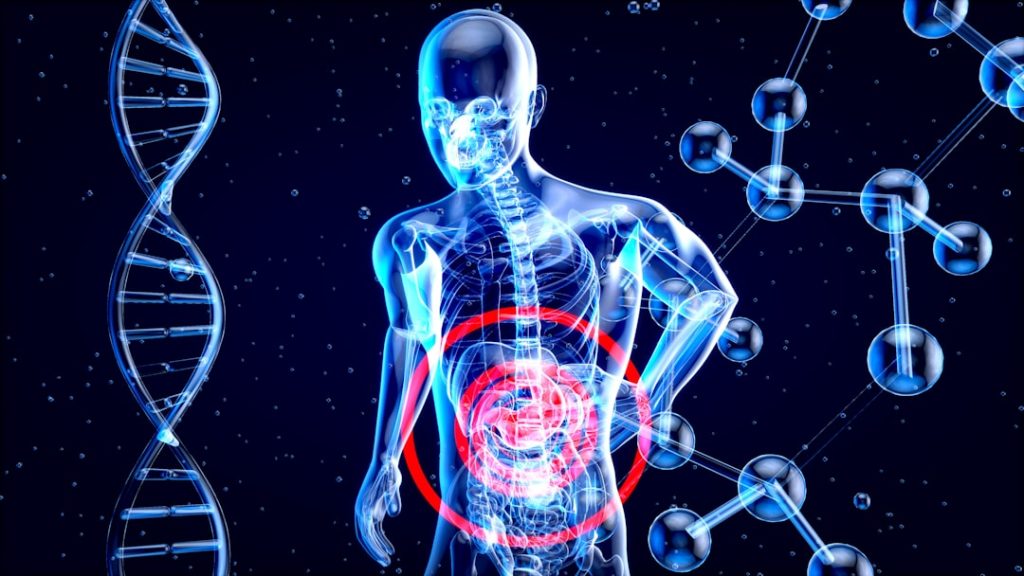Selective Androgen Receptor Modulators, commonly known as SARMs, are a class of compounds designed to selectively target androgen receptors in various tissues. Unlike traditional anabolic steroids, which indiscriminately affect multiple systems in the body, SARMs aim to provide the benefits of muscle growth and fat loss with fewer side effects. This selectivity is achieved through their unique chemical structure, which allows them to bind to androgen receptors in muscle and bone while minimizing interactions with other tissues, such as the liver.
However, the implications of this selectivity on liver health remain a topic of ongoing research and debate. The liver plays a crucial role in metabolizing substances that enter the body, including drugs and supplements. When SARMs are ingested, they undergo hepatic metabolism, which can potentially lead to liver stress or damage.
While many users report positive outcomes from SARMs, it is essential to consider the long-term effects on liver function. The extent of these effects can vary based on the specific SARM used, dosage, duration of use, and individual health factors. Understanding these dynamics is vital for anyone considering the use of SARMs for performance enhancement or bodybuilding.
Key Takeaways
- SARMs can potentially be hard on the liver, with some studies showing liver damage in users.
- Research on the liver toxicity of SARMs is ongoing, but current evidence suggests potential risks.
- Compared to traditional steroids, SARMs may have a lower impact on the liver, but caution is still advised.
- Signs of liver damage from SARMs can include jaundice, abdominal pain, and dark urine.
- To minimize the risk of liver damage, users should seek medical advice, monitor their liver health, and use SARMs responsibly.
The potential risks of liver damage from SARMs
Despite their appeal as a safer alternative to anabolic steroids, SARMs are not without risks. One of the primary concerns is the potential for liver damage. Some SARMs have been associated with elevated liver enzymes, which can indicate stress or injury to liver cells.
This elevation can be a warning sign that the liver is struggling to process these compounds effectively.
While not all users experience adverse effects, the risk remains significant enough to warrant caution.
The potential for liver damage is compounded by the fact that many SARMs are often sold as research chemicals and are not regulated by health authorities.
This lack of regulation means that users may not always know the purity or dosage of the compounds they are taking. Contaminants or unlisted ingredients in these products could further increase the risk of liver toxicity. Therefore, it is crucial for users to be aware of these risks and to approach SARM use with a well-informed mindset.
Research and studies on the liver toxicity of SARMs
Research into the hepatotoxicity of SARMs is still in its early stages, but some studies have begun to shed light on their potential effects on liver health. For instance, a study published in the journal “Toxicology” examined various SARMs and their impact on liver cells in vitro. The findings indicated that certain SARMs could lead to increased levels of liver enzymes, suggesting a potential for hepatotoxicity.
However, it is important to note that these studies often involve high concentrations of SARMs that may not reflect typical usage patterns among individuals. Moreover, anecdotal evidence from users often highlights cases of elevated liver enzymes after SARM use, reinforcing concerns about their safety profile. While some users report minimal side effects, others have experienced significant health issues, including jaundice and abdominal pain.
The variability in individual responses underscores the need for more comprehensive clinical studies to better understand the long-term implications of SARM use on liver health. For more information, you can visit this link.
Comparing SARMs to traditional steroids in terms of liver impact
| Metrics | SARMs | Traditional Steroids |
|---|---|---|
| Liver Toxicity | Low | High |
| Enzyme Elevation | Minimal | Significant |
| Impact on Liver Function | Less severe | More severe |
When comparing SARMs to traditional anabolic steroids, it is essential to recognize that both classes of compounds can pose risks to liver health, albeit in different ways. Traditional steroids are known for their hepatotoxic effects, particularly oral steroids like methyltestosterone and oxymetholone, which are notorious for causing significant liver strain and damage. These compounds often lead to severe side effects such as cholestasis and peliosis hepatis, conditions that can result in life-threatening complications.
In contrast, SARMs are generally considered to have a lower risk profile regarding liver toxicity. However, this does not mean they are entirely safe. While some studies suggest that SARMs may exert less stress on the liver compared to traditional steroids, they are not devoid of risk.
Users should remain vigilant about potential side effects and monitor their health closely while using these compounds. Ultimately, both SARMs and traditional steroids carry inherent risks, and individuals must weigh these against their desired outcomes.
Signs and symptoms of liver damage from SARM

Recognizing the signs and symptoms of liver damage is crucial for anyone using SARMs. Early indicators may include fatigue, nausea, and abdominal discomfort. As liver function deteriorates, more severe symptoms can manifest, such as jaundice (yellowing of the skin and eyes), dark urine, and pale stools.
Additionally, individuals may experience unexplained weight loss or swelling in the abdomen due to fluid accumulation. It is important for users to be proactive about monitoring their health while using SARMs. Regular blood tests can help track liver enzyme levels and provide insight into overall liver function.
By being aware of these symptoms and taking appropriate action if they arise, users can mitigate potential health risks associated with SARM use.
Tips for minimizing the risk of liver damage while using SARMs
To minimize the risk of liver damage while using SARMs, individuals should adopt several precautionary measures. First and foremost, it is advisable to consult with a healthcare professional before starting any SARM regimen. A medical expert can provide personalized guidance based on an individual’s health history and goals.
Additionally, starting with lower doses and gradually increasing them can help assess tolerance and reduce the likelihood of adverse effects. Another important strategy is to incorporate regular breaks into SARM cycles. Cycling off allows the body time to recover and can help prevent long-term damage to the liver.
Furthermore, maintaining a healthy lifestyle through proper nutrition and hydration can support overall liver health. Supplements such as milk thistle or N-acetylcysteine (NAC) may also be beneficial in promoting liver function, although users should consult with a healthcare provider before adding any new supplements.
Seeking medical advice and monitoring liver health when using SARMs
Given the potential risks associated with SARM use, seeking medical advice is paramount for anyone considering these compounds. A healthcare professional can offer valuable insights into safe usage practices and help monitor any changes in liver function over time.
Regular check-ups and blood tests can provide essential information about liver enzyme levels and overall health status.
In addition to professional guidance, users should remain vigilant about their own health and well-being. Keeping a detailed log of any symptoms experienced during SARM use can aid in identifying patterns or issues that may arise. By prioritizing communication with healthcare providers and being proactive about monitoring their health, individuals can make informed decisions regarding SARM use while minimizing potential risks to their liver health.
FAQs
What are SARMs and how do they affect the liver?
SARMs, or selective androgen receptor modulators, are a type of performance-enhancing drug that are similar to anabolic steroids but are designed to target specific androgen receptors in the body. While SARMs are often marketed as a safer alternative to traditional steroids, there is still concern about their potential impact on the liver.
Are SARMs hard on your liver?
Research on the liver toxicity of SARMs is still limited, but some studies have shown that certain SARMs can have a negative impact on liver health. It is important to be cautious when using SARMs and to monitor liver function regularly.
How do SARMs compare to traditional steroids in terms of liver impact?
While SARMs are often touted as being less harmful to the liver compared to traditional steroids, there is still a risk of liver damage associated with their use. Traditional steroids are known to have a significant impact on liver health, and while SARMs may be less hepatotoxic, they are not without risk.
What are the signs and symptoms of liver damage from SARMs?
Signs of liver damage from SARMs may include jaundice (yellowing of the skin and eyes), dark urine, abdominal pain, nausea, vomiting, and fatigue. It is important to seek medical attention if any of these symptoms occur while using SARMs.
What are some tips for minimizing the risk of liver damage while using SARMs?
To minimize the risk of liver damage while using SARMs, it is important to use them responsibly and in moderation. This includes following recommended dosages, avoiding the use of multiple SARMs at once, and taking regular breaks from SARM use to allow the liver to recover.
Should I seek medical advice and monitor my liver health when using SARMs?
Yes, it is highly recommended to seek medical advice before using SARMs, especially if you have pre-existing liver conditions. Regular monitoring of liver function through blood tests is also important while using SARMs to ensure early detection of any potential liver damage.





